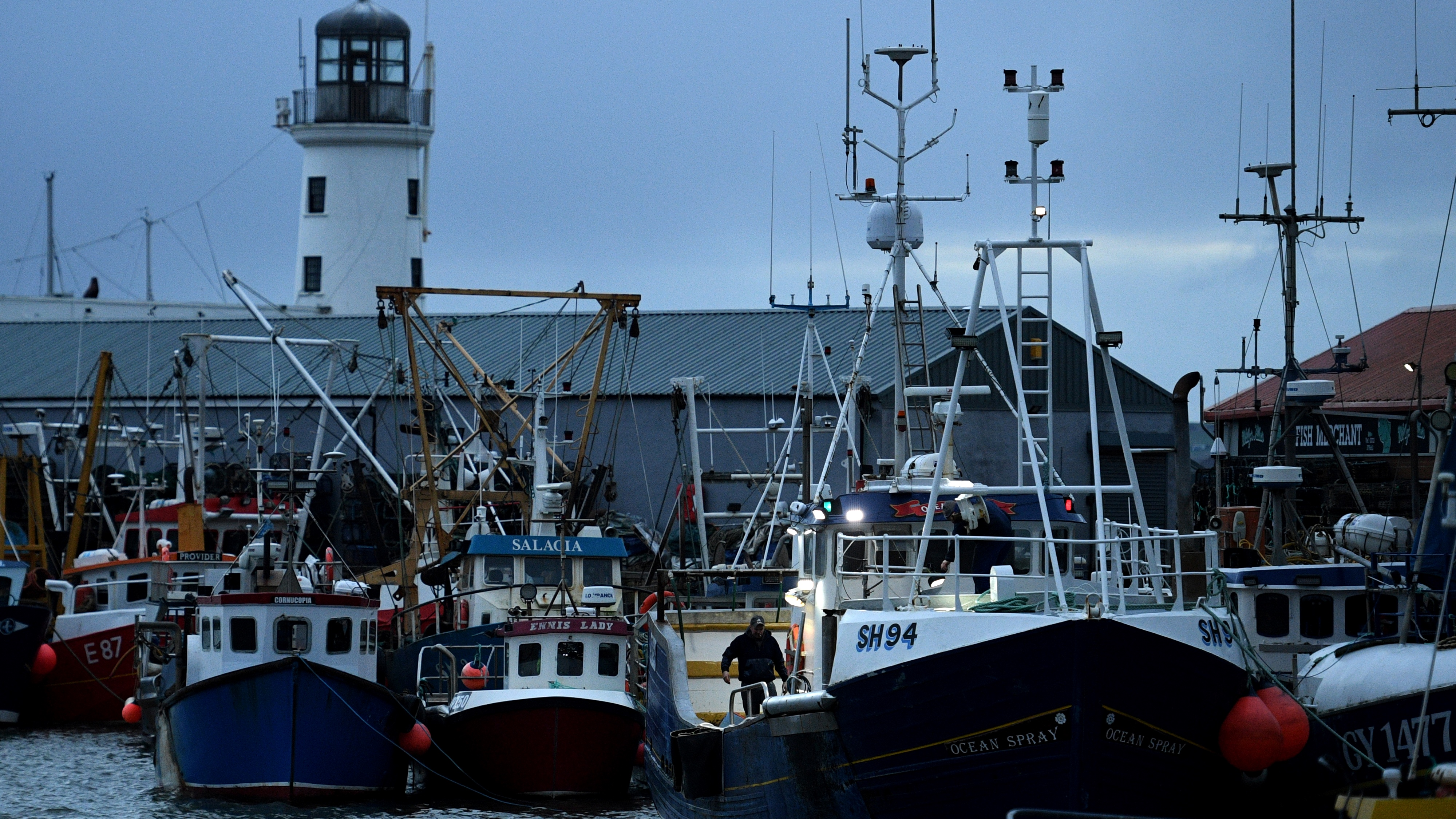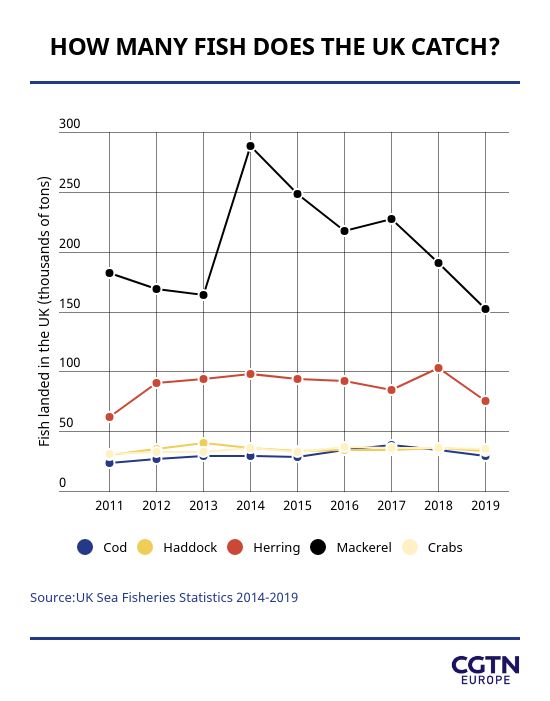
What do these British trawlers catch? Lots of herring! /AFP/Oli Scarff
What do these British trawlers catch? Lots of herring! /AFP/Oli Scarff
The new European Union-UK Trade and Cooperation Agreement has brought several years of tense negotiations to a close – at least for now.
One key topic was EU fishing access to UK waters. In a compromise, the parties decided the bloc's access would be cut by 25 percent this year – and by a further 2.5 percent each year until 2026.
Then it's up to the UK to either ban all EU ships from its waters (as some in the UK fishing community want) or negotiate a new agreement.
Read more: Why is fishing so important?
But what does the UK fishing industry actually look like?

The 10-year trend for UK fisheries' landing counts is downward – despite a large spike in Mackerel catch in 2014.
The 10-year trend for UK fisheries' landing counts is downward – despite a large spike in Mackerel catch in 2014.
It might seem confusing, but people in the UK don't really eat much of the fish caught off their coast. Instead, it's the sale of fish such as mackerel and herring to EU members and further afield that keep the industry afloat.
That can be seen in the UK government figures for imports and exports of fish such as Mackerel and Herring, along with crabs.
And much of what the UK does eat is actually imported from Europe and around the world. Looking at the imports vs exports of these fish also reveals the balance of trade.
Cod is the mainstay of battered fish and chips – a classic British comfort food.
But cod don't swim in significant numbers in British waters and between the late 1950s and the mid-1970s the British fleet lost the so-called "Cod Wars" with the Icelandic fishing fleet.
Since then, the large majority of cod sold in the UK has been imported, including 25,000 tons from China.

